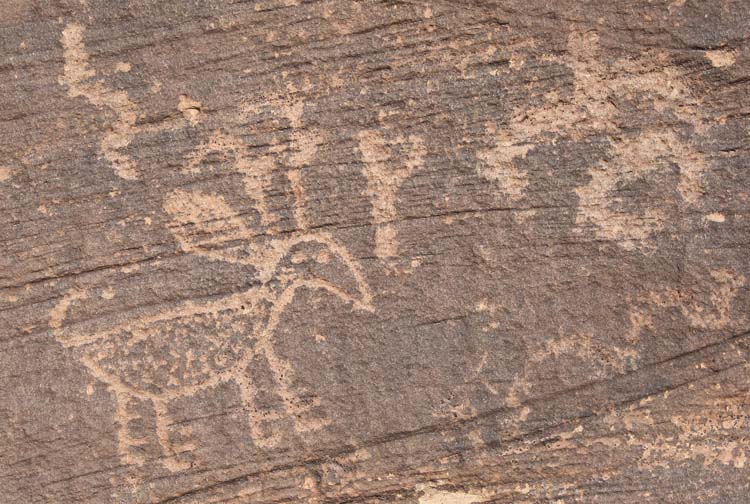The Conservancy purchased Creswell Ranch in December of 1997. The site lies on the former homestead of Rufus Creswell and his family. The property was a 480 acre in-holding within Homolovi Ruins State Park. The property contains eight archaeological sites, including petroglyphs, ancient water-control devices, and the ruins of an adobe pueblo. Artifacts associated with the sites suggest they were occupied between A.D. 1250 – 1400. Researchers hope Creswell can help reveal the nature of the movement and arrival of groups in the area during the latter part of 13th Century. The Creswell Ranch was the first site acquired by the Conservancy to have Homolovi material.
Lange and Chuck Adams, director of the Homolovi Research program, were excited to find that the Creswell Ranch sites show a combination of adobe brick and earthen architecture with the more typical stone masonry. Adobe brick is relatively rare in Southwestern pueblo sites before contact with Europeans, but the little Colorado River valley holds a concentration of this type of architecture.
Many researchers believe that Hopi people are related to the ancient peoples who might have built the extensive Homolovi villages. Even today, members of the Hopi villages take pilgrimages to Homolovi to visit their ancestral homeland. During the acquisition process the tribe provided a letter of endorsement for the project. The Conservancy was awarded an Arizona Heritage Fund grant to help acquire the site.
This site was featured in the very first volume of American Archaeology, Spring 1997 |Vol. 1 No. 1.




